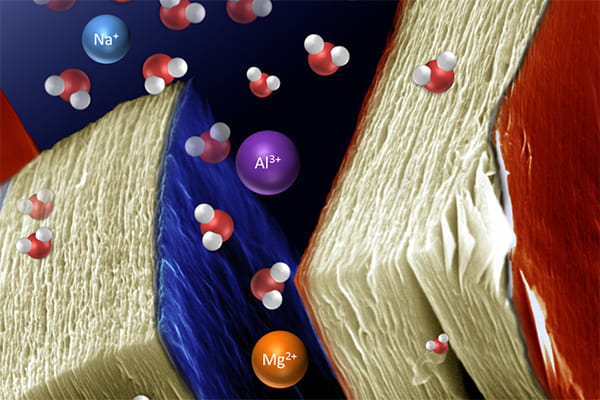Researchers Uncovering More and More Possibilities for Ultra-thin Materials

Drexel University researchers are continuing to expand the capabilities of a new type of material that is as thin as a single atom, but has the potential to store massive amounts of energy. Their latest achievement has pushed the material’s storage capacity to new levels while also allowing for its use in flexible devices.
Over the past several years, Drexel has established itself as a world leader in creating materials for energy storage devices called electrochemical capacitors—also known as supercapacitors or ultracapacitors. Researchers in Drexel’s College of Engineering are constantly searching for new materials that will boost the supercapacitors’ ability to store energy.
About three years ago, Michel Barsoum and Yury Gogotsi, professors in Drexel’s College of Engineering, discovered atomically thin, two-dimensional materials—similar to graphene, a headline-grabbing material that helped two scientists win a Nobel Prize in 2010—that have good electrical conductivity and a surface that can hold liquids. They named these new materials “MXenes.”
Since their discovery of MXenes, Gogotsi, Barsoum and their team of materials scientists have forged ahead in exploring the potential uses of the new material. Their latest findings are reported in the Sept. 27 issue of the journal Science.
In their piece entitled “Cation Intercalation and High Volumetric Capacitance of Two-Dimensional Titanium Carbide,” Gogotsi and Barsoum along with Drexel researchers Maria Lukatskaya, Olha Mashtalir, Chang Ren, Yohan Dall’Angese and Michael Naugib and Patrick Rozier, Pierre Louis Taberna and Dr. Patrice Simon from Université Paul Sabatier in France, explain how MXenes can accommodate various ions and molecules between their layers by a process known as intercalation. For example, placing lithium ions between MXene sheets makes them good candidates for use as anodes on lithium-ion batteries.
In the Science paper, Barsoum and Gogotsi demonstrate intercalation of MXenes with a variety of ions, including lithium, sodium, magnesium, potassium, ammonium and aluminum ions. The resulting materials, which also show high energy storage capacities, present another avenue of research that has grown from the initial MXene discovery at Drexel.
“Currently, nine MXenes have been reported by our team, but there are likely many more that will be discovered,” said Gogotsi, who is also director of the A.J. Drexel Nanotechnology Institute. “So even the impressive capacitances that we are seeing here are probably not the highest possible values to be achieved using MXenes. Intercalation of magnesium and aluminum ions that we observed may also pave the way to development of new kinds of metal ion batteries.”
The researchers also reported on using MXene “paper” electrodes, instead of conventional rolled powder electrodes with a polymer binder. The flexibility of this paper suggests MXenes may also be useful in wearable energy storage devices, which is another area of ongoing research in a collaboration between the Drexel’s Materials Science and Engineering department and Genevieve Dion’s Shima Seiki Haute Technology Laboratory.
In This Article
Drexel News is produced by
University Marketing and Communications.
